Bigoli Pasta from Veneto.
Bigoli is a long thick pasta, originally made with buckwheat flour. Nowadays, it's normally made with whole wheat or 00 flour, egg (often duck eggs), water or milk, butter and salt. It looks like a thick spaghetti which is quite rough on the outside. This means it holds sauces well. Bigoli originates from the Veneto region, where I live, but is also popular in Eastern Lombardy.
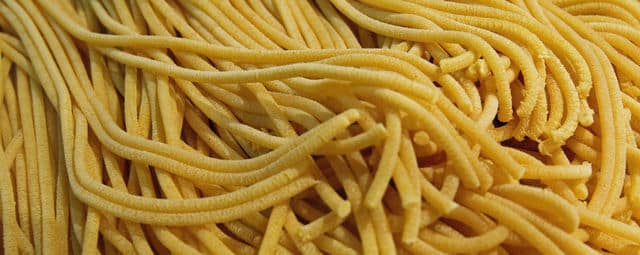
Venetian Bigoli and the bigolaro!
This pasta has been made and eaten in Veneto since the time of the Venetian Republic. Legend has it that in 1604 a pasta maker from Padua, called Bartolomio Veronese but nicknamed 'Abundance' because of his size, applied to the city council for a patent for a machine he had invented which made long pasta. This machine was made of wood and cylindrical in shape. It allowed the dough, which was inserted from above, to be compressed using a lever and a piston and then passed through a perforated filter. The result was a long pasta similar to Neapolitan spaghetti, but much larger (3 to 4 mm in diameter) and quite coarse on the surface.
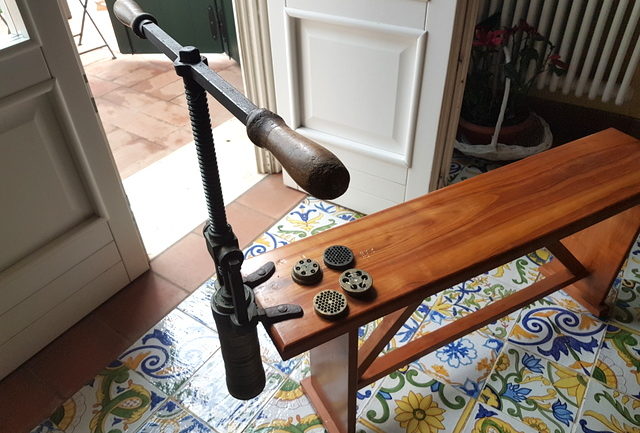
What does the word 'bigoli' mean?
There are a number of different opinions on where the name 'Bigoli' comes from. Some say it derives from the local dialect word 'bigat', which means caterpillar or from the Latin 'bombyx' meaning bug. Others think that the word 'bigoli' refers to the curved rod with a hook at each end, which was carried on the shoulders and used to transport buckets of water or milk urns. And there are other theories, of course!
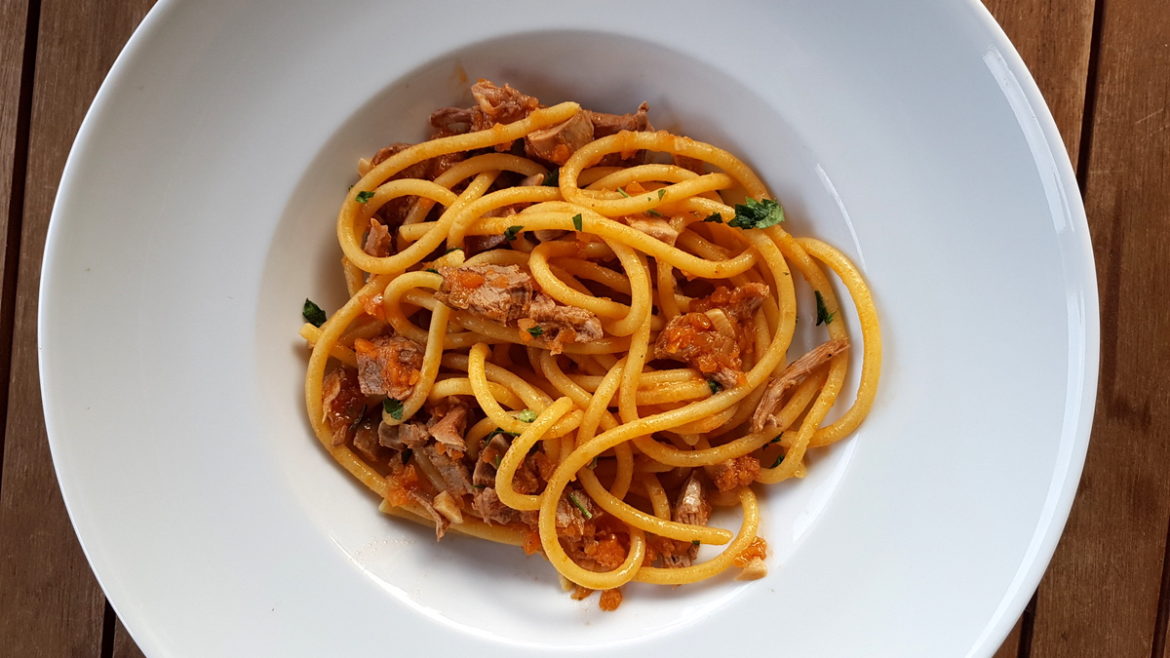
Some more bigoli history!
From the end of 17th century, Abundance's 'bigolaro', as it was called, became popular in the north-east of Italy. Today it is also referred to as a 'torcio'. This machine was originally used mostly by poorer families because they could make a very inexpensive pasta with it, which didn't include eggs. Nowadays, fresh bigoli is often made with eggs, especially duck eggs. But at that time, eggs were used as coins in exchange for goods, so one egg could buy its equivalent weight in sugar or salt. Since most families had their own chickens, eggs were not scarce, but they were used primarily as 'money' by the poor.

In the past, the bigoli dough was made from flour, a pinch of salt and enough water to make it firm but elastic. The bigolaro was fixed to a table. Although some types could be attached to a stool or bench on which the person operating the bigolaro would sit. As soon as the pasta strings were made, they were hung to dry over sticks suspended between two chairs. Locally, these sticks were called 'perteghe' or 'perteghete', depending on their length.
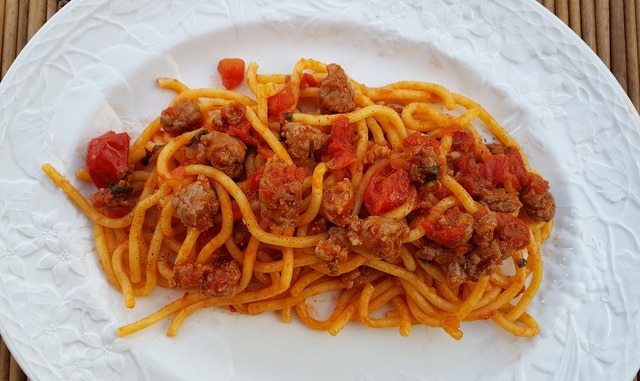
Recipes for Bigoli in Veneto.
Here in Veneto, there are still restaurants and home cooks that make this pasta with a bigolaro! I have also read that it’s possible to make it with a meat grinder. But, to be honest, I have never tried to make it. Here, many supermarkets sell good quality freshly made bigoli, so I allow myself the luxury of buying it ready!
Bigoli is the most common pasta eaten in Veneto
on days of abstinence.
If you're looking for some pasta recipes for days of abstinence, have a look at these pasta recipes for lent.
Traditionally, this pasta is eaten with a duck ragu, a meat sauce or a sausage ragu, as well as with anchovies (or salted sardines). In the Lake Garda area, bigoli is also served with a lake fish known as Alborelle. In the Padua area, it is often paired with a ragu made from typical farmyard poultry such as stewing hen, guinea fowl and duck or including rabbit. This sauce is called 'ragu di corte', meaning farmyard ragu. Bigoli is also the most common pasta eaten in Veneto during days of abstinence and fasting, such as Christmas Eve, Ash Wednesday and Good Friday.
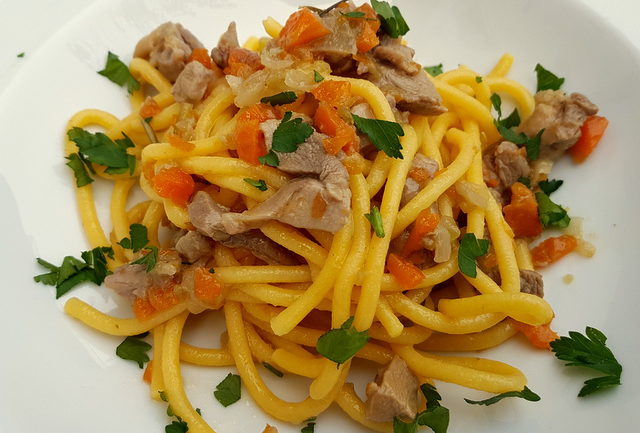
Bigoli in sauce days.
Almost all the cities in Veneto had and have 'bigoli in sauce' days (bigoli in salsa). On these occasions, this pasta is prepared with salted sardines, plus a variety of other ingredients which differ from city to city. However, it is also traditionally served with turnip greens and sausage or swordfish and cherry tomatoes. Gorgonzola cheese or goose and porcini mushrooms are other popular condiments. Whichever bigoli dish you choose to try, if you haven't eaten bigoli before, I guarantee you will love it!
Check out these recipes on the Pasta Project for Bigoli (They can be made with spaghetti or bucatini too!)
Watch bigoli being made using a bigolaro (This video is in Italian but you can still get an idea of the process)
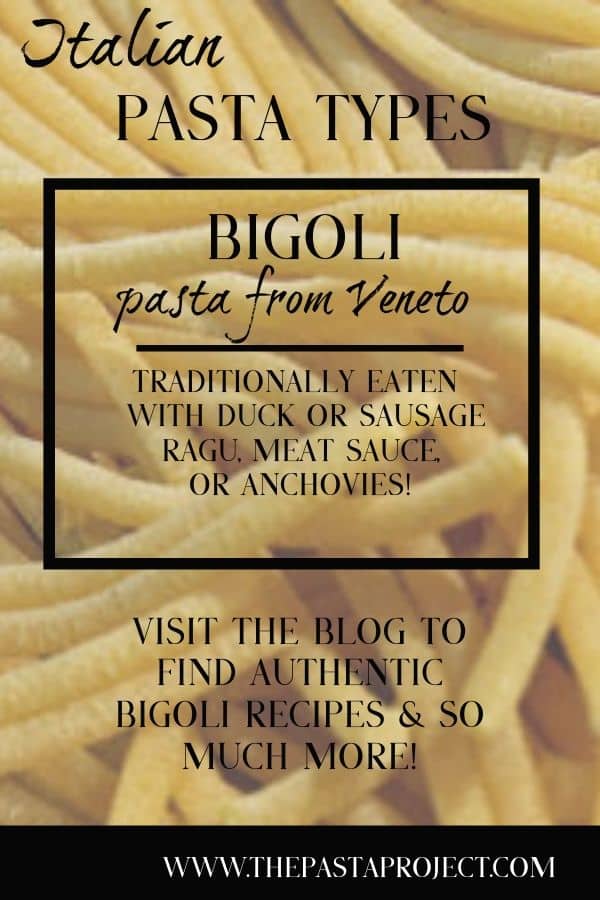
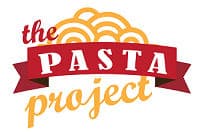

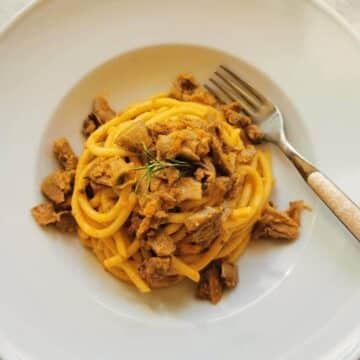
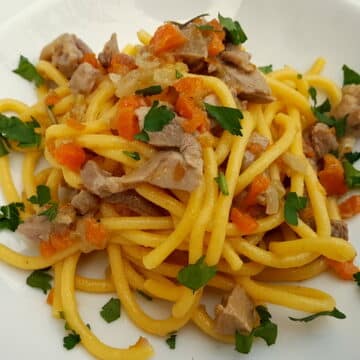
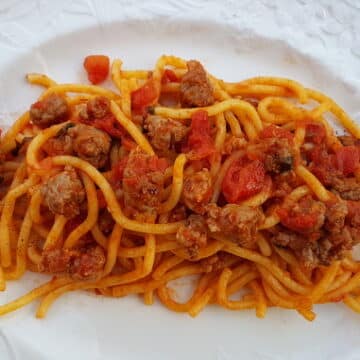
Dennis says
Hi Jacqui. Love your site and FB page! I cannot find bigoli in local stores... is there something more readily available that you would recommend as a suitable substitution? Thank you!
Jacqui says
Thank you for your comment Denis. I'm happy you like my blog and FB page. Re bigoli I know you can buy dried bigoli online. I've seen it on Amazon.com and Amazon.co.uk But if you can't find it you can use a thick spaghetti instead (spaghettoni) One of my favourite brands for spaghettoni is Benedetto Cavalieri which can be bought through Eataly. Hope that helps. Have a great weekend.
Gareth says
Buckwheat "noodles" from Asian shops works fine if you really want the original buckwheat pasta. Buy the thickest you can find.
The World Digested says
Very good article! Thank you! Just had the best wholewheat bigoli with duck ragu, of all places, in Osaka, Japan!
Jacqui says
Thank you!! Glad you like the article. I live in Veneto where bigoli come from so here this pasta is served in every restaurant and eaten in every home!! Wouldn't think to find it in Japan though! I make a mean bigoli with duck but haven't tried wholewheat bigoli! Have to make some when I buy my bigolaro. It's on my wish list! All the best from Verona!
Dick kessler says
Many thanks for showing the historical thickness of bigoli, I modified a die from my simac pastamatic mx700 machina to make this pasta, I made my first bigoli duck ragu with meat grinder disc but I used the large hole disk not the small one still it was good though the next one will use whole wheat flour and the simac have you gone to one of the bigolaro festivals around vicenza? Mille grazie dick